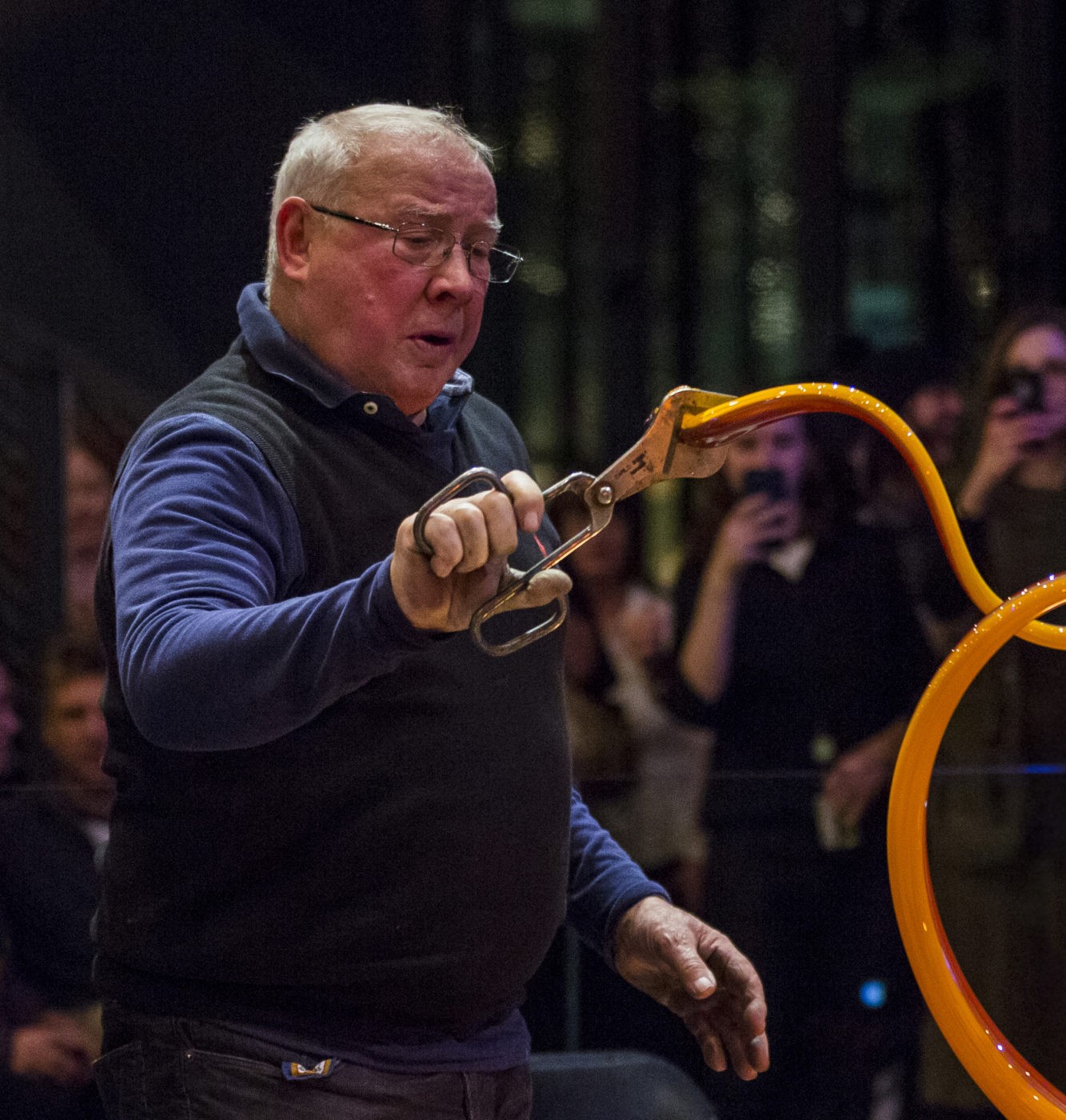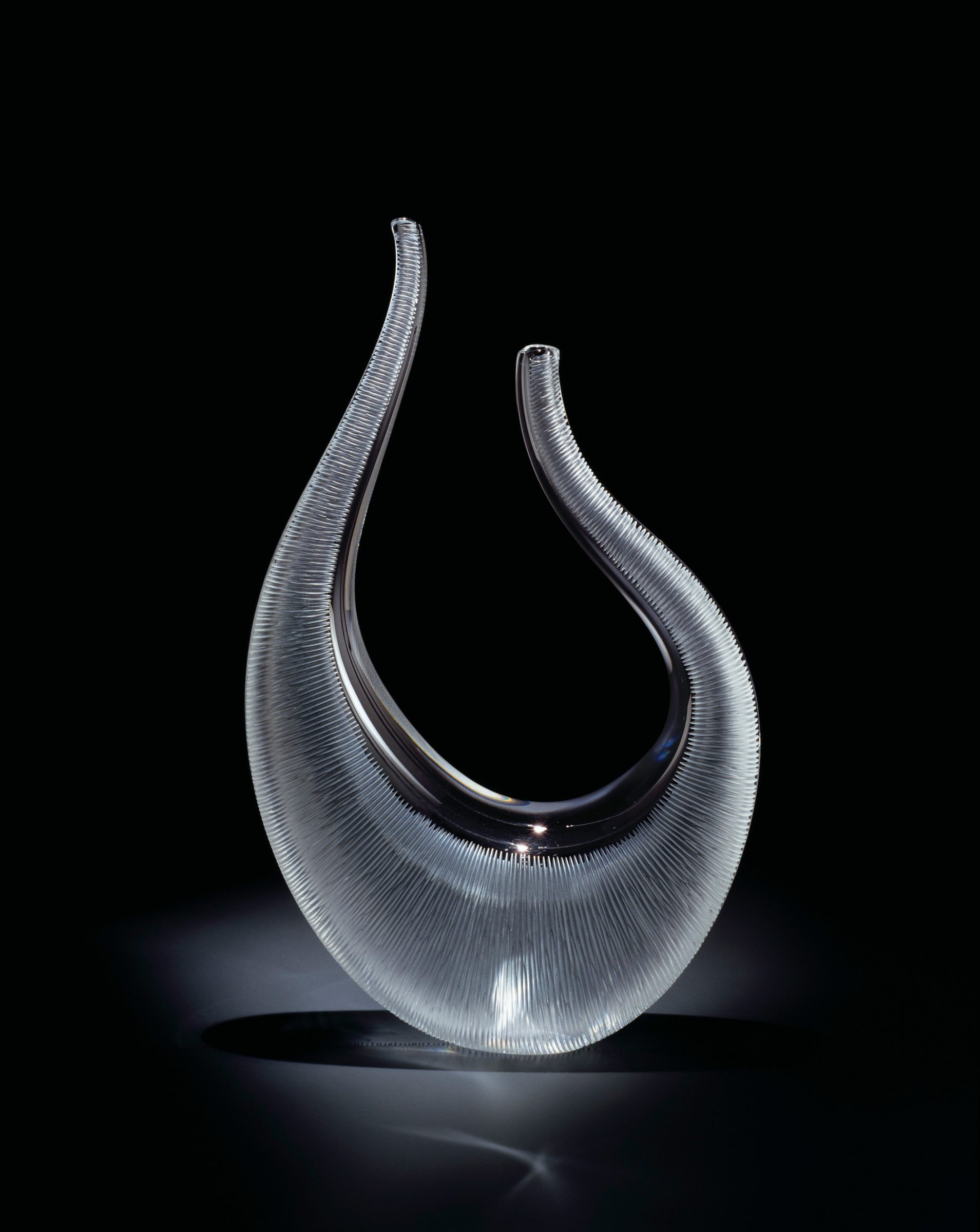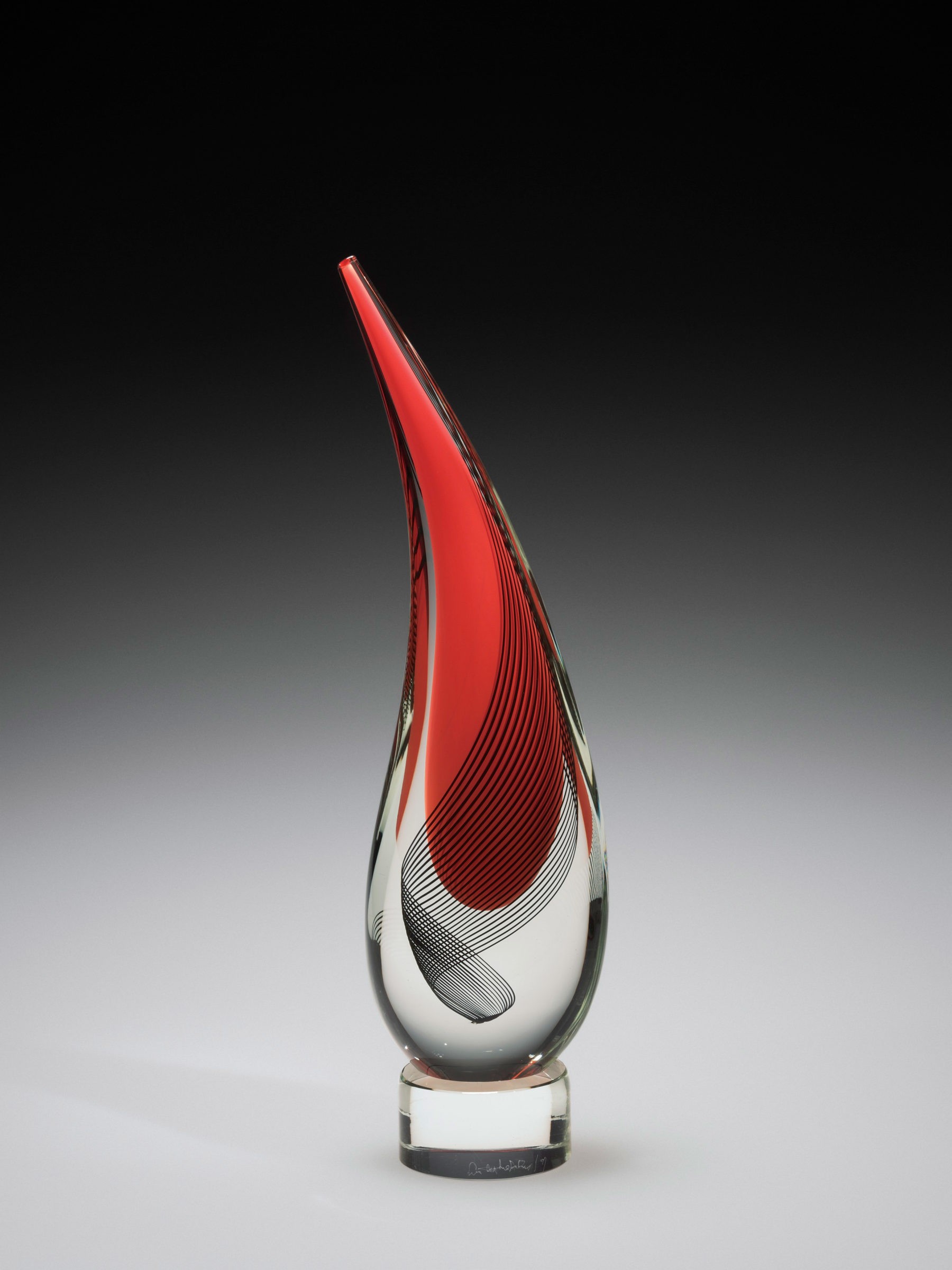
Image courtesy of The Corning Museum of Glass.
Lino Tagliapietra
Born in Murano, Italy, Lino Tagliapietra (1934– ) became an apprentice glassblower when he was 11 years old; by age 21, he was recognized as a “Maestro”—a title conferred on the most skilled of Italy’s glassblowers. He worked in several of Murano’s best-known glass factories until 1990, when he established his own independent studio. Tagliapietra played a significant role in sharing traditionally secret Venetian glassblowing techniques with the wider world, beginning with a visiting teaching post at Pilchuck Glass School in 1979; he also taught American processes to his Italian peers. Tagliapietra works in both Murano and the United States and has collaborated with numerous American studio glass artists, including Dale Chihuly and Dan Dailey.
Works

Endeavour, 2004. Collection of The Corning Museum of Glass, Corning, New York. Purchased in honor of James R. Houghton with funds from Corning Inc. and gifts from the Ennion Society, the Carbetz Foundation Inc., James B. Flaws and Marcia D. Weber, Maisie Houghton, Polly and John Guth, Mr. and Mrs. Carl H. Pforzheimer III, Wendell P. Weeks and Kim Frock, Alan and Nancy Cameros, the Honorable and Mrs. Amory Houghton Jr., E. Marie McKee and Robert H. Cole, Robert and Elizabeth Turissini, Peter and Cathy Volanakis, and Lino Tagliapietra and the Heller Gallery, New York. (2005.4.170).

Fenice II, 1998. Made at Steuben Glass, Inc.; (1903-2011); Factory. Overall H: 33.3 cm, W: 20.5 cm, D: 8 cm. Collection of The Corning Museum of Glass, Corning, New York. Gift of Royal & Sun Alliance and Christina Rifkin (2000.4.8).

Lacrima I, 1991. Overall H: 61.5 cm, W: 16 cm, D: 8.5 cm. Collection of The Corning Museum of Glass, Corning, New York. Gift of the Ben W. Heineman Sr. Family (2006.4.282).

Lino Tagliapietra discusses Americans coming to understand the importance of technique in glassmaking.
01:11 Transcript